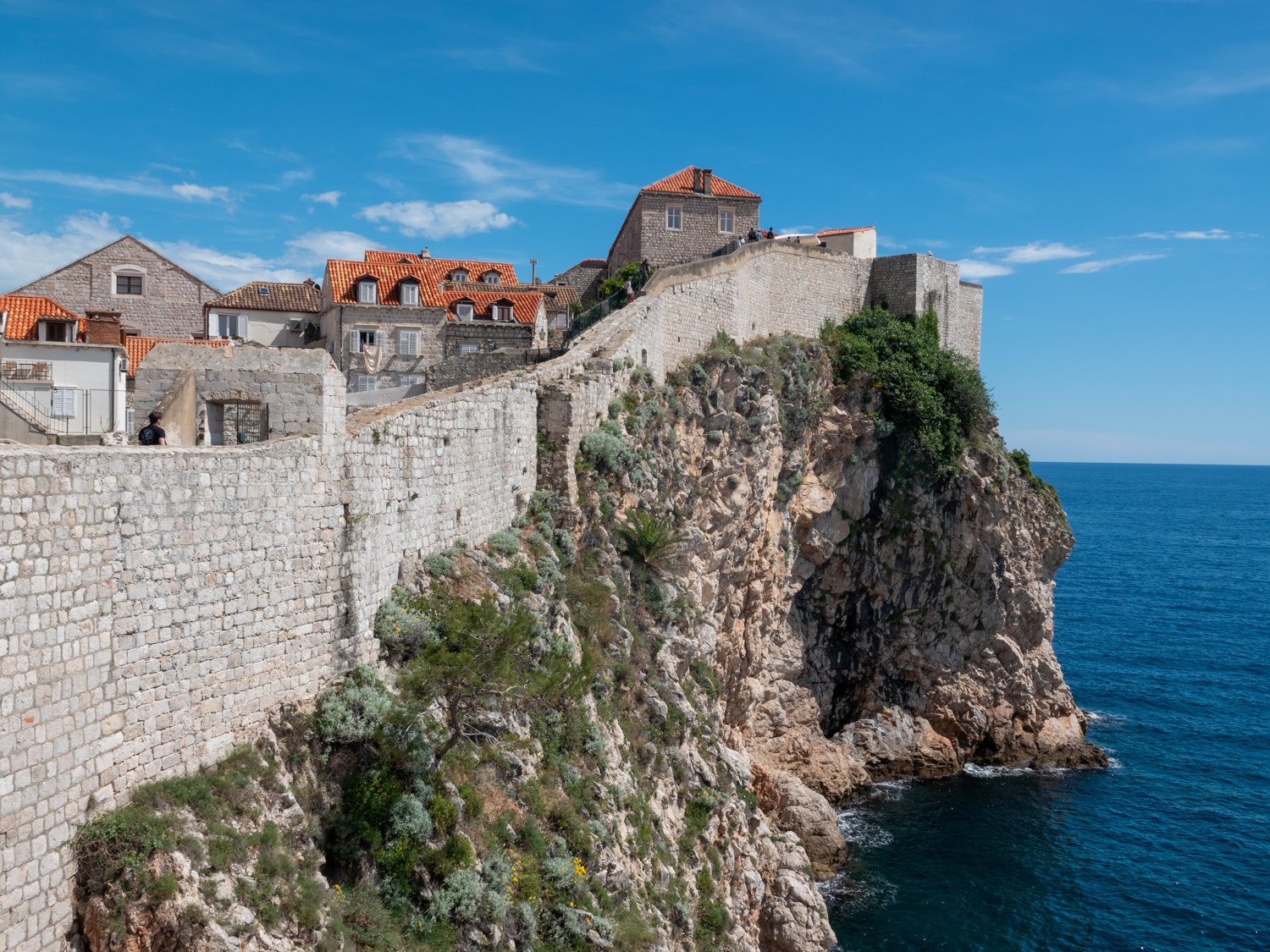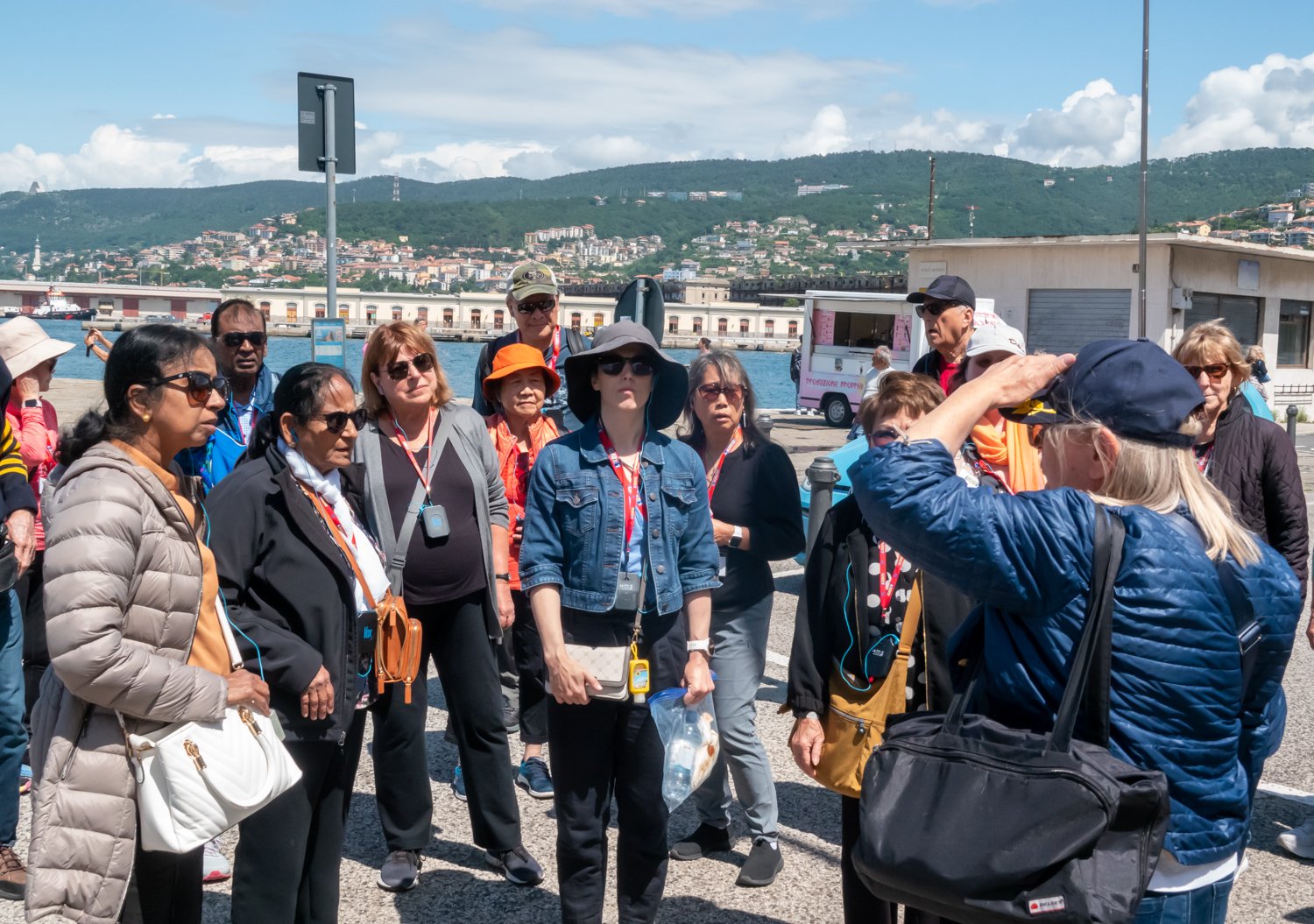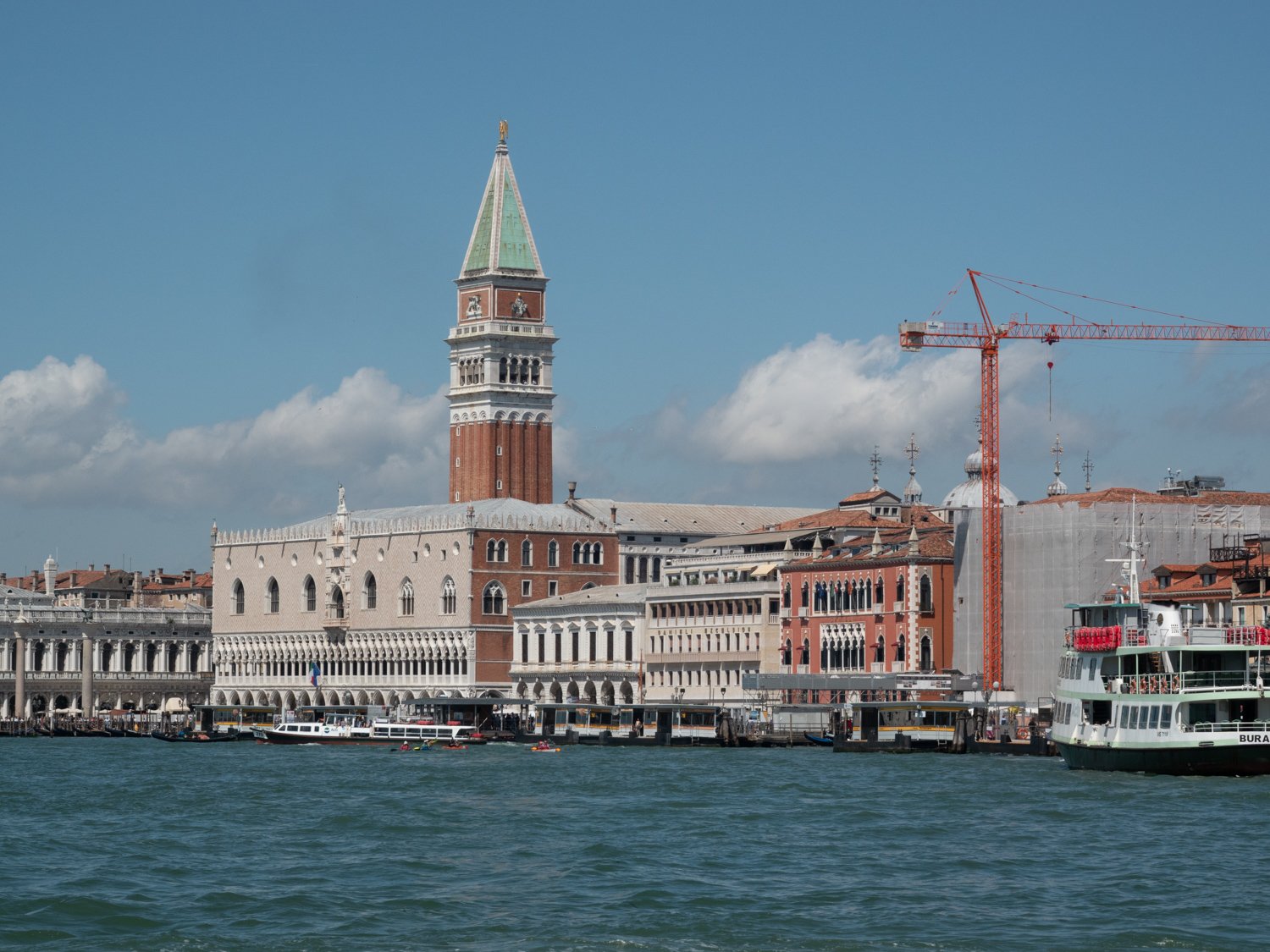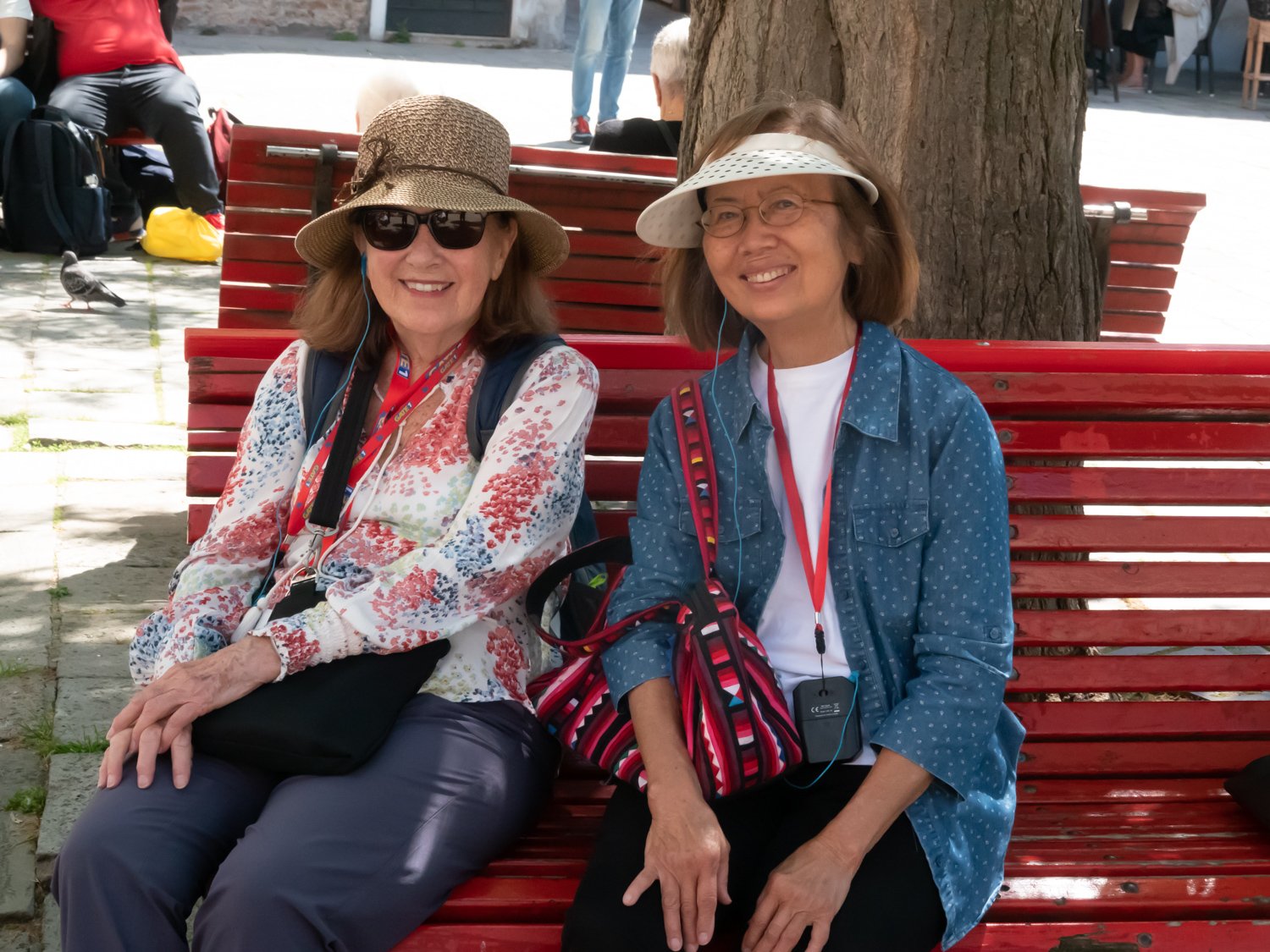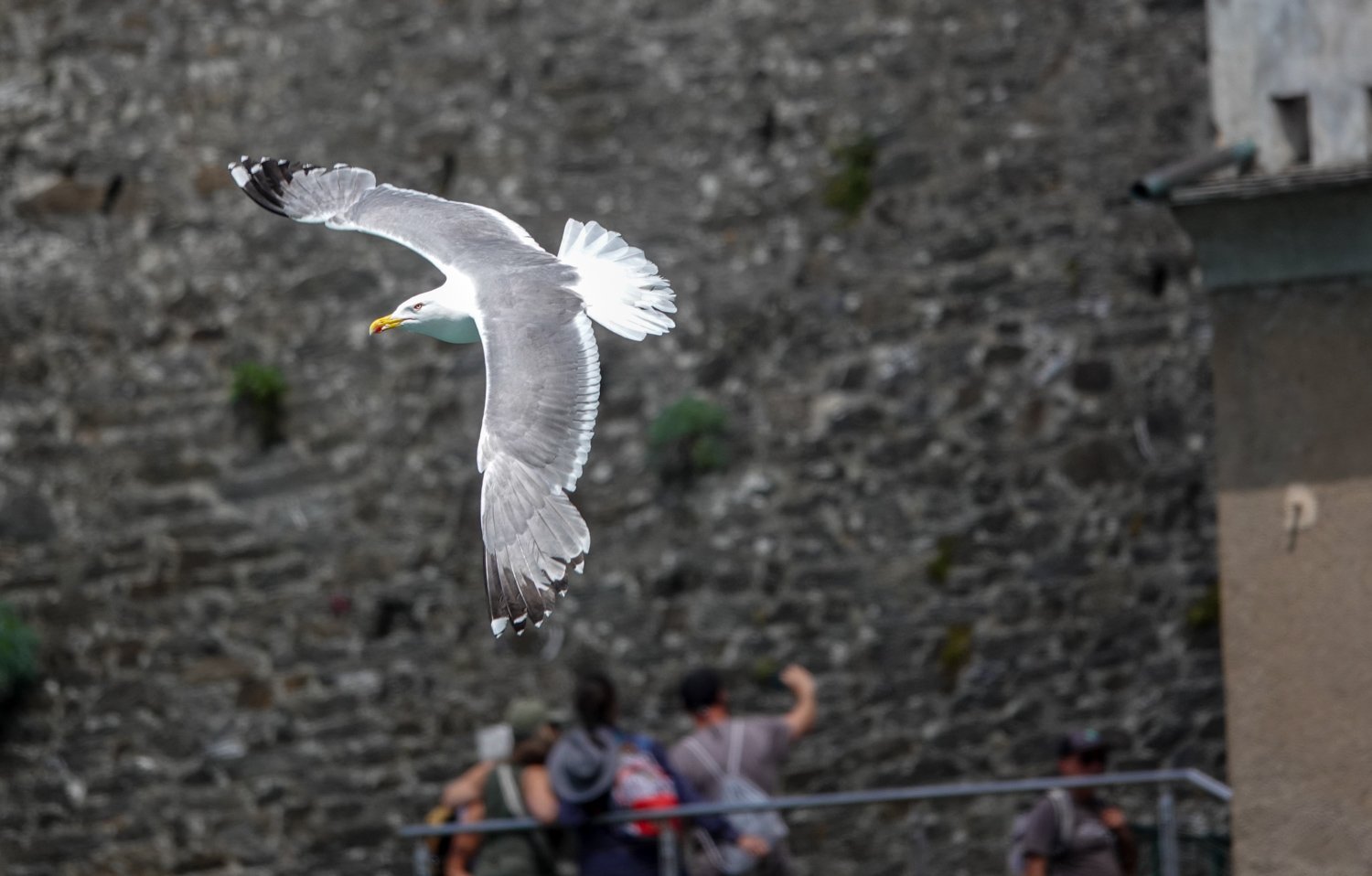Croatia and Cinque Terre
In May of 2024 Grace and I went on a trip to Croatia and the surrounding Balkan countries with Gate1 travel tour company. We went with 8 other friends from the Villages in San Jose, several of whom had previous experience with Gate1. The tour covered most of the countries of the former Yugoslavia (Croatia, Bosnia and Herzegovina, Montenegro, Slovenia) and ended in Italy. We began in Zagreb and proceeded by bus to Sarajevo, Mostar, Dubrovnik, Montenegro, Split, Plitvice Lakes National Park, Postojna Caves, Bled, Trieste and Venice over 12 days. After the tour ended in Venice, Grace and I took the train to Cinque Terre for an additional five days before returning home.
This trip has plenty to recommend it. Old town Dubrovnik was enchanting, the waterfalls in Plitvice were out-of-this-world spectacular, the medieval towns of Split and Kotor were marvelous, the scenery and pesto in Cinque Terre were captivating, and of course there is nowhere in the world like Venice. We had a large tour group of 42 people on the bus, but in general everyone got along very well and there were only a few occasions when the group had to wait because someone was not punctual at a meeting point.
One of the weak points of this particular Gate1 tour is the considerable time spent on the bus. As the map below shows, the tour had a peculiar circular path almost doubling the distance instead of a more direct itinerary. In retrospect it would have been preferable to begin in Dubrovnik and just go northbound with sidetrips to Mostar and Sarajevo and maybe skipping Zagreb. The main disadvantage of the large size was that it made the bathroom stops lengthier. We dealt with this by creatively swapping gender assignments of the toilets when possible.
Zagreb
Grace and I arrived a day early to help with the jetlag and in case there was any problem with the airlines. We rented an Airbnb just around the corner from the hotel that Gate1 scheduled for the tour to begin. We spent the day wandering around the Upper Town and trying to stay awake.
St, Mark’s Church
The colorful roof of the church has the coat of arms of Croatia-Slavonia on the left and of the city of Zagreb on the right. The church has been closed for a number of years. This area is the center of government as the prime minister’s office (Ban’s Palace) is to the left and parliament to the right. When we were there, crowd of TV cameramen and commentators were waiting there for news of steps to set up a government.
St. Mark’s church is one of the highlights of the Upper Town.
Overlooking the Dolac farmer’s market, open for over 900 years.
The Stone Gate, the only surviving town gate of the Upper Town. A small chapel is inside.
We had coffee and pastries at this Lav Caffe Galerija that overlooks the Stone Gate. Croatians love to sip coffee and watch the world go by at the al fresco cafes.
Lunch at the Pivnica Mali Medo brewpub on Tkalciceva Street, which becomes a lively and crowded scene at dinnertime.
Croatian Museum of Naive Art
A highly rated site is the Croatian Museum of Naive Art, but this was very disappointing as little of the art was actually on display. Indeed only a single small room contained the highly unusual art works, as most of the museum displayed posters from the past. A unique aspect of the art, aside from being painted by those with little art training, was that it was painted “backwards” on glass. The pieces were painted with the foreground first and the background last. For example, to paint a flowering tree, one would paint the flowers first, then the leaves, then the background. Then the art was then turned around so the glass was facing outward and the foreground was in front.
The only major piece of art on display was timely, as it depicted the surprised reactions of the peasants during a total solar eclipse. We had just experienced the solar eclipse from southern IL a few weeks earlier.
Gate 1 walking tour
The Gate1 tour began with a walk around the Upper Town, visiting many of the same places that we had seen the previous day. Unfortunately, the day was very rainy and we had to spend part of the walking tour hiding under a kiosk in the park. However, we were joined by a group of young school kids who were also avoiding the rain and they serenaded us with several Croatian songs.
Our guide Primoz contemplating the up-coming 2 weeks.
With Ruder Boskovich, Croatian physicist, astronomer, mathematician, poet, and theologian.
The oldest and shortest funicular in the world.
Kumrovec Village
Kumrovec was the birthplace of Marshall Tito, the titan of Yugoslav politics during the years 1943-1980. It is now a tourist destination with houses and environment kept in the style of his childhood. There were houses showing weavers, blacksmiths, potters, gingerbread makers, coopers, tanners, and woodworkers. It was reminiscent of Old World Wisconsin except there was no one in period costumes playing the part of the settlers.
The enigmatic leader of Yugoslavia, Josip Broz, or Marshall Tito.
The bakery with entertainment
Toymaker’s shop
Crossing the border from Croatia into Bosnia and Herzogovina we had to undergo passport checks individually. I took a photo of Grace while she was being checked. Ram thought he’d do the same when his wife was being checked after me, but the border guard saw him taking the photo and made him delete it from his phone. Ironically, they are both visible in my photo.
Sarajevo, Bosnia and Herzogovina
We spent one night in the historic city of Sarajevo, which has a long history of religious and cultural diversity. It was founded by the Ottoman Empire but it also added a large population of Sephardic Jews who were expelled from Spain in the late 1400s. It is sometimes called the “Jerusalem of Europe”. One can find a Catholic church, eastern Orthodox church, mosque and synagogue within the same small community.
Modern day Sarajevo is still dominated by the gruesome events of the Bosnian War in the 1990s following the breakup of Yugoslavia. One can get a sense of the horrors of this war by the fact that the hair-raising term “ethnic cleansing” was first applied to the tactics used in this war. Sarajevo suffered under the longest siege of a capital city in modern warfare, almost 4 years (1425 days) from April, 1992 to February, 1996. Scars from the constant bombing of the city can be seen despite the restoration over the last 30 years.
Scars from the Bosnian War of 1990s.
The historic spot where an assassination triggered the start of World War I.
Mosque minaret
In the mosque there was a small library with a copy of the Quran on the shelf.
East meets West in Sarajevo.
On the way from Sarajevo to Mostar we made a stop at a restaurant that has a reputation for healthy water and great roasted lamb. Unfortunately we did not confirm the latter.
Mostar, Bosnia and Herzegovina
The star attraction in the town of Mostar is the old bridge (Stari Most) which has been here for over 4 centuries spanning the Neretva River. It is the longest single span stone arch on the planet but the original bridge built in 1566 by Ottoman Suleyman the Magnificent was destroyed in the Bosnian War following the collapse of Yugoslavia in the 1990s. It was rebuilt using the same technology used by the Ottomans in 2004. For some it is symbolically the point where East meets West.
Bridges play an important role in the history of this area. Before the tour began, a friend gave me a famous historical novel about the Balkans, Bridge on the Drina, by Ivo Andric, who was awarded a Nobel Prize in 1961, chiefly for this work. The bridge in the book is not the one we visited but many of the same themes of multi-cultural turmoil echo in the history of the region. The book chronicles the violent nature of the societies: to deter wrongdoing, towns would place the heads of wrongdoers on prominent view in the town square. A person caught sabotaging the building of the bridge was even impaled while alive and left to die on the spike.
Continuing an old tradition, young men jump off the Mostar bridge into the icy cold Neretva River to amuse the tourists and impress the girls. However, they only jump after they have collected enough money from the by-standers. It turns our that the young men barebacked in swim suits are only there to tease the tourists. Jumpers will have wet suits on.
I went down to the base of the bridge to try to get a photo of a jump while part of our tour was walking across the bridge.
Man and bird in flight
Animated GIF of a fellow jumping from the bridge. This jump cannot be scored since I missed the entry.
Panorama view of Mostar from the top of the bridge
Mostar was also badly damaged during the Bosnian Wars, some buildings have not yet been rebuilt.
Dubrovnik, Croatia
The “pearl of the Adriatic” lives up to its reputation with its atmospheric Old Town surrounded by impressive walls bulging with tour groups. With a vivid imagination, one can almost pretend to be in a medieval, traffic-free city if only there were no cruise ships in the harbor. The steep and narrow alleyways crammed with al fresco cafes are inviting. Fans of the Game of Thrones will find many familiar backdrops.
From the lookout view above the city
The old town wall is impressive.
Tour of Old Town Dubrovnik
Onofrio’s Big Fountain which was build in 1438 to supply the city with water via aqueducts 12 km away.
Onofrio’s Fountain
One of the stone-carved masked faces (maskeron) of the Onofrio Fountain
One of many narrow alleyways of Dubrovnik.
Town Wall and Bokar Fortress
Pile Gate entrance to the Old Town
Franciscan Monastery
The bell tower of the Franciscan monastery through a window of the monastery
In the courtyard of the Franciscan monastery
A grim reminder of the Bosnian War when Dubrovnik was under siege for 8 months in 1991-2.
Sponza Palace
Mount Srd
A cable car that goes up to the fortress on the hill behind Old Town provides sweeping views of the city and its surroundings.
The walled old town of Dubrovnik from the top of the cable car
From Mount Srd
From the cable car
Checking out Bokar Fortress
Walk around the City Wall
One of the highlights of Dubrovnik is a walk around the city wall. I did it in the late afternoon when it wasn’t crowded at all, but there is definitely some climbing involved.
This was my entry onto the wall.
Panaroma view of the main street Stradun on the left with Onofrio’s Big Fountain, the water supply for the town, at lower right. In the distance one can see the Franciscan monastery tower (left middle), Bell Tower (at the end of Stradun), and the twin domed steeples of the Serbian Orthodox church to the right in the distance.
Panorama view of Old Town through a window in the wall.
The nearly uniform bright orange roofs probably reflect the fact that most roofs had to be redone following the siege of the city during the Bosnian War.
The town wall of Dubrovnik
People still live in the Old Town
Buza, best place in town for a drink with a view
Panorama of the picturesque Old Port.
Old Port through a window
From the top of Minceta Tower
Dinner cruise `
One evening we went for a cruise at dinnertime to view the Old Town from the sea followed by a seafood dinner.
Old Town from the water
Sunset over Dubrovnik old town
Dubrovnik at night
Church of St. Blaise at night. Dedicated to the patron saint of Dubrovnik.
Tudman Bridge at night
Bay of Kotor, Montenegro
A short distance from the border to Montenegro is the scenic Bay of Kotor. We took a day trip to visit the Our Lady of the Rocks Church on an island and then to the medieval town of Kotor.
Scenic village on the Bay of Kotor
Famous embroidery by a wife that took 25 years using her own hair.
Cormorant
Cathedral of St. Tryphon in Kotor
St. Nicholas church
Lunch in Kotor old town
Cats run free in Kotor
Split, Croatia
Palace of Diocletian
The highlight of a visit to Split was the tour of the Roman Palace. One of the largest and best examples of Roman architecture, the Diocletian Palace is an excellent example of Roman ruins dating to the 4th century. Diocletian was the Roman Emperor from AD 284-305. This was his retirement palace.
Our “official” tour photograph in the Palace of Diocletian, Split. Hopefully, no one traveling on business.
Cathedral of Saint Domnius
Ceiling of the entry vestibule (once had a dome)
One of the 13 black granite sphinxes brought from Egypt.
Venetian Castle outside of the palace
Statue of 16th-century poet Marko Marulic, by the noted sculptor Ivan Mestrovic
The Split City Museum had an exhibition on Marko Marulic
Those long bus rides can be wearing
Plitvice Lakes National Park
Plitvice was the first national park in Croatia and it’s easy to see why. It is a natural wonderland that surprises on every turn. If you like to see waterfalls, this may be the best place on the planet. The blue-green water is wonderfully clear. We watched fish swimming in the lakes. This is a highlight and must see of any trip to Croatia. This is where I wish I had brought along a tripod.
After-dinner entertainment
Postojna Cave
This is the largest and most visited cave in Europe. Visitors ride a small train for much of the tour while hiking the remainder. Highlights include the spaghetti hall and some translucent curtains of stalactites. Photography is difficult as it is dimly lit and no flash is allowed.
In the Spaghetti Hall
Ljubljana, Slovenia
We spent one afternoon exploring the capital of Slovenia.
The famous three bridges.
Slovenians love bears.
View of the city from a tall skyscraper
Lake Bled, Slovenia
Lake Bled is a scenic destination in the Julian Alps of Slovenia. The lake has a picturesque setting surrounded by mountains and forests, the large medieval Bled Castle dominates the shore, and a small tear shaped island with a pilgrimage church that dates to the 17th century.
Bled Castle at night.
Bled Castle and St. Martin’s church on a calm night.
From Bled Castle
Bled Castle
Our guide extraordinaire
Janek Puhar was a Slovenian photographer who pioneered early techniques for daguerreotypy in the 1840s. The castle museum featured some of his work.
Bled Island with church
Panorama of Lake Bled. We made the mistake of walking around the lake during a rainstorm without a raincoat or umbrella.
Lake Bled area is famous for its creme cakes, which you could purchase from the robot at the right.
Dinner in Radovijica
We had dinner in a quaint small village near Bled. Noteworthy was the entertainment that was provided by a pair of dancers in traditional costumes and the hat game.
Trieste
We made a short stop in Trieste on the way to Venice.
Commemorative sculpture to the fallen in World War I on the hill at San Giusto.
Facade of the 14th century Cathedral of San Giusto. It was built on the site of an old Roman gateway.
Remains of old Roman forum at San Giusto
City Hall in Trieste
This was a major shipping company based in Trieste.
Venice
The Gate1 tour ended with two nights in Venice, which is always a treat. There’s really nowhere in the world like Venice!
Bell tower of of Piazza San Marco
Pigeons
A time-honored tradition is for tourists to feed pigeons in St. Mark’s Square, but this has led to a problem: excess birds. The locals have come up with some ingenious solutions to the problem.
At breakfast this fellow was at our hotel restaurant. The hotel hired him and his hawk to hang around and discourage the birds from bothering the guests at breakfast.
Murano glass blowing
In the morning we took a boat to Murano Island to visit a glass blowing demonstration. It was remarkable how quickly and easily the artisan was able to make a glass horse. And their sample of glass art pieces for sale were amazing.
Glass is glowing hot
It took less than 5 minutes to shape this horse.
Building Bridges by Lorenzo Quinn
Tour of Venice
Training to be the next Messi
The leaning bell tower of San Giorgio dei Greci
Gondolas traffic: I like how the paddles are all lined up in parallel
Sometimes one has to kick off the sides in the narrow canals to keep from scraping.
Canal reflection
Piazza San Marco
Bridge of Sighs in the background connects the Doges Palace on the left with the prison on the right. It was named by Lord Byron who speculated that prisoners would sigh at their last glimpse of the city before entering the prison.
Bridge of Sighs in the background
Bridge of Sighs in the background
Piazza San Marco
Not a bad place to celebrate your 50th wedding anniversary!!
Lion of Venice
Clock Tower of St. Mark’s
The clock (Torre dell’Orologio) was originally finished in 1499 shortly after Columbus arrived in America. The two bronze shepherds at the top strike the hours. Twice a year (!) on the feasts of the Epiphany and of the Ascension, the Three Magi accompanied by an angel process in front of the Virgin and Child statue, where the time is given in hours (XII) and minutes (55). Below that is a blue clock face with the sun on a dial giving the time of day in 24 hour notation and a rotating moon showing its phase. The arch below the clock face leads to the main shopping street of Venice, the Merceria.
Clock tower of Saint Mark’s (Torre dell’Orologio). On the day we visited the moon was 5 days before full (77% full).
Photo of the clock machinery from https://torreorologio.visitmuve.it/en/il-museo/percorsi-e-collezioni/the-clock-machinery/
Twice a year (!!) the Three Magi and angel process in front of the Virgin Mary and infant! Photo from Wikipedia (Fragment wieży zegarowej na Placu św. Marka w Wenecji)
Tour of Venice (cont.)
Follow that tour guide…
The famous Rialto Bridge
Seagull, see below…
Venice and the moon during the blue hour.
Cinque Terre
After the Gate1 tour ended in Venice, Grace and I took the train from Venice to LaSpezia and then to Manarola in the Cinque Terre. From north to south, the five towns are Monterosso, Vernazza, Corniglia, Manarola and Riomaggiore.
Manarola
Like the other Cinque Terre towns, Manarola is small but built on a cliff so the streets are a maze of stairs and alleyways. Fortunately our Airbnb host (Bruno) met us at the end of the tunnel from the train station to help us get to the apartment with our luggage.
At our first dinner we discovered the local pesto dish that was on the menu of every restaurant we subsequently visited in Cinque Terre, trofie al pesto. Italian cuisine has hundreds of different kinds of pasta, but in this region it appears that trofie is the preferred pasta to eat with pesto. Not only had I never heard of trofie, but when we visited the large Eataly market in San Francisco after returning to the US, they were also not familiar with it!! Turns out that they did have it under a slightly different name (trofietta) in their dried pastas.
Panorama of Manarola at dusk
We had a wonderful dinner at this restaurant (Ristorante da Aristide) on the first night
Manarola at night
Manarola at night
Hike from Volastro
Unfortunately the coastal hikes from Manarola to both Riomaggiore and Corniglia have been closed for a number of years due to landslides. Instead we took the hike from Volastro. To minimize climbing, we rode the ATM bus to Volastro and hiked back to Manarola.
Manarola from the hike from Volastra.
Corniglia from the south. One can appreciate from this view that there is a considerable climb to get from the train station to the town.
Nessun Dorma
This very popular cafe has a spectacular view of the Manarola harbor and is unique in several respects. First of all, the reservation system is quirky. You don’t make a reservation for a time that suits you. There is almost always a queue so to get in line you have to download an app, which when activated puts you into the queue. You don’t ask for a time; you simply have to wait until your name rises to the top. Since the line is often very long (e.g. 80-100 people in front of you), you can only guess when your name will be called. Secondly, it specializes in bruchettas and small plates (no pizza!! no pasta!!). You basically choose from different samples of small plates. I really had no clear idea what we ordered until it arrived at the table. You can even sign up for a class to learn how to make pesto. Finally, the name of the place derives from the famous aria in Turandot, made famous by Pavarotti, whose visage appears on the menu.
At Nessun Dorma eatery overlooking the harbor of Manarola
Vernazza
The host of our Airbnb (Marco) did not offer to meet us so we had to find the place on our own. We stayed here for 3 nights.
Vernazza harbor from the breakwater
Panorama of Vernazza from the castle (Castello Doria) tower
Monterosso from Vernazza on a stormy evening
Vernazza harbor at night
Vernazza harbor at night
Purple passionflower
There are lots of stairs to negotiate in the Cinque Terre.
We took a wonderful hike from Vernazza to Corniglia with some spectacular views.
Corniglia with Monterosso in the distance
Wildflowers in Cinque Terre
Retaining wall on the hike
Corniglia from Vernazza
View of Monterosso from Vernazza on a windy day
Chiesa di San Pietro, Corniglia
The town of Corniglia is 360 steps above the train station
Genoa
Our flight home began in Genoa at 6:30 AM so we spent the last night in a hotel near the airport. We had a free night for one last Italian dinner in the community of Sestri.
Genoa’s favorite son
The altar of the Basilica of our Lady of the Assumption Church in Sestri
Seagulls
Seagulls are a ubiquitous presence in any seaport town; their graceful and seemingly carefree soaring provides a continuously changing foreground to the scene. I thought that the iconic and colorful pastel houses of Cinque Terre form a unique background to the balletic birds.
Yellow-legged seagull
Please note: All text and photos are copyrighted to Tom Yin. You are welcome to share the URL, however re-production of text or photos is not permitted. If you would like to feature this story, contact me and I would be happy to provide you with details, photos, text etc. Thanks!















































































